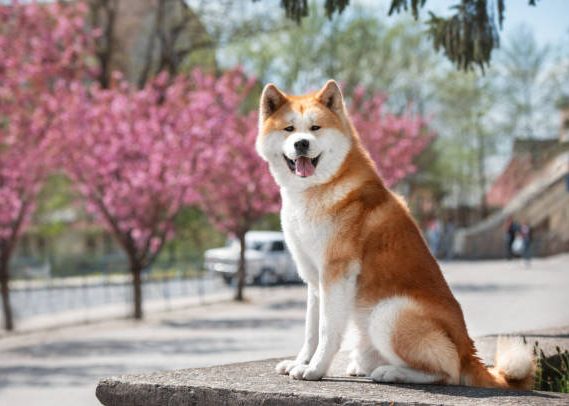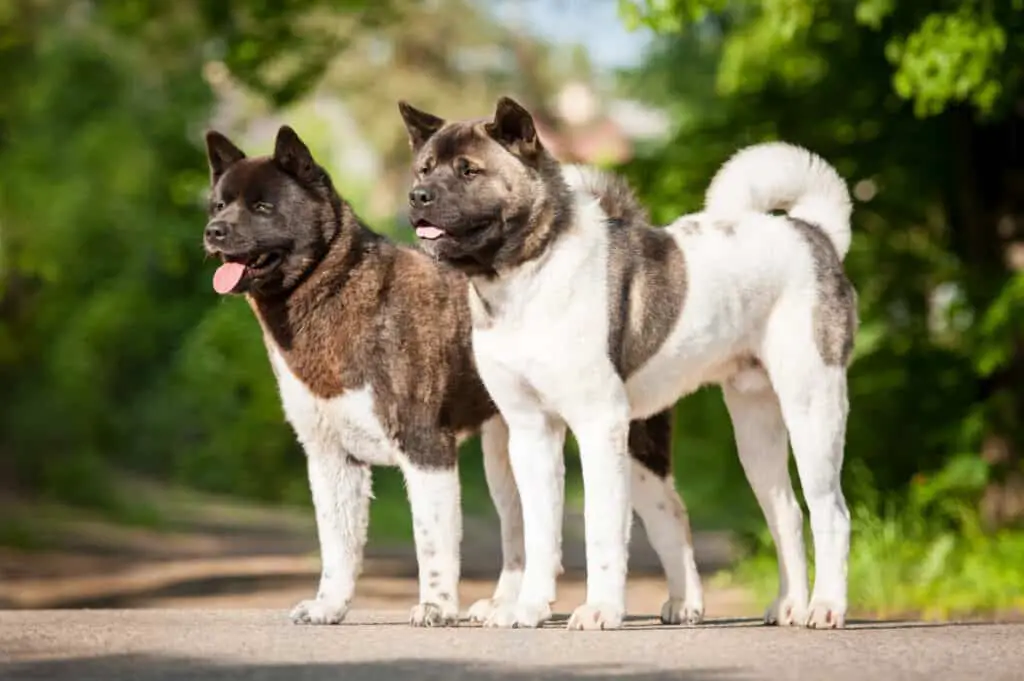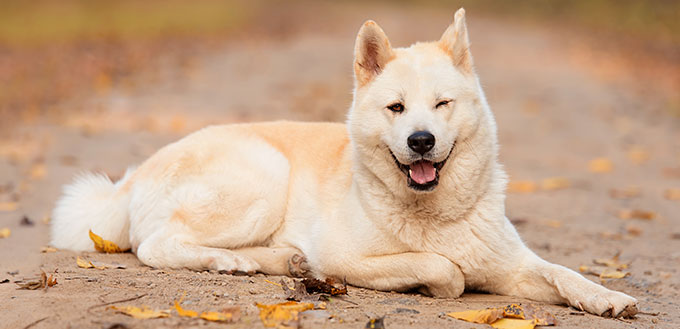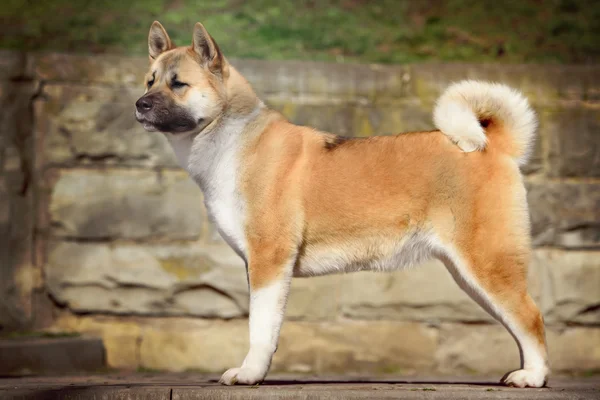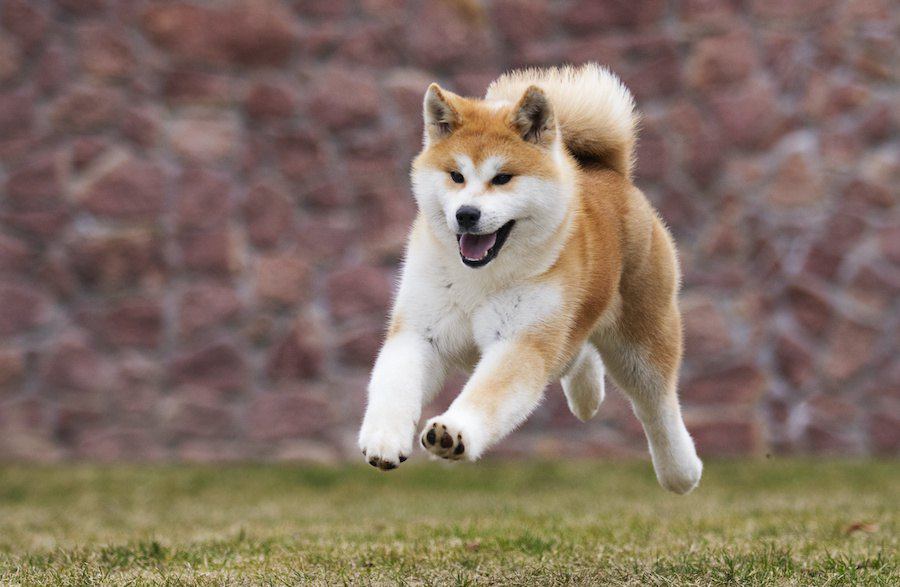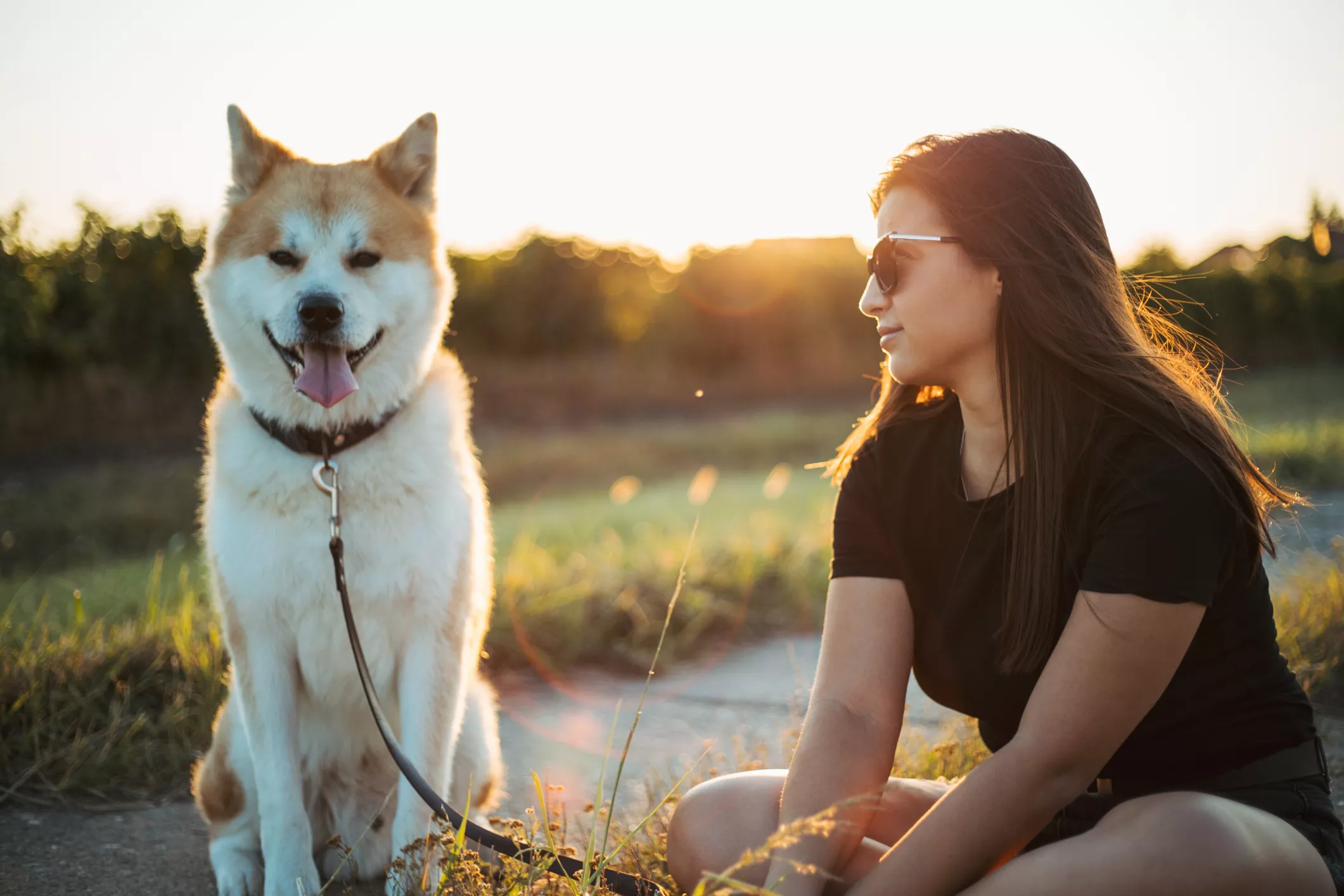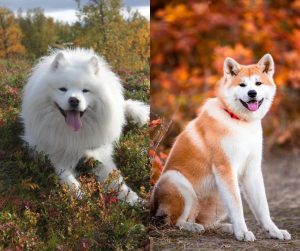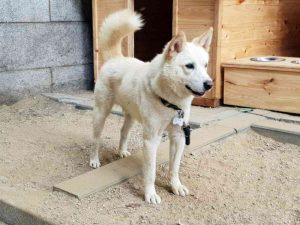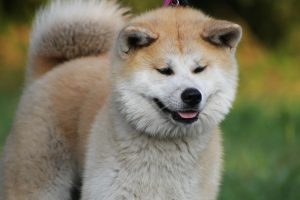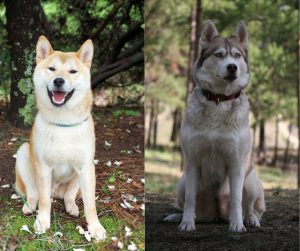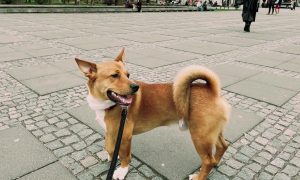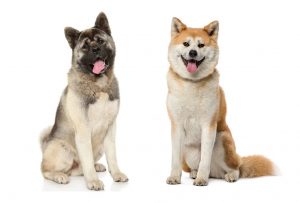Akita, sometimes called Akita Dog, is a working dog breed originating in the mountains of northern Japan. In 1931, the government of Japan designed the breed as a “natural monument”. In the early days of its history, the Akita was employed as a hunting and fighting dog. Nowadays, it is trained for police work and guard work. How much do you know about the Akita dog breed?
Let’s take a look at this powerful muscular dog. The first puppy was brought to the United States by Helen Keller in 1937. That was six years after the Japanese government declared the Akita puppy a natural monument. Helen was presented with a gift to her during a tour of Japan, and she brought it to the United States.
The American Kennel Club recognized the breed and set show classifications for the first time in 1973.
Breed ID
Origin: Japan
Size: 26 to 28 inches
Weight: 80 to 110 pounds
Lifespan: 10 to 12 years
Group: Working dog
Breed Overview
The Akita is a large and powerful dog breed with a noble and intimidating presence. Originally bred for guarding royalty and nobility in feudal Japan, they also tracked and hunted wild boar, black bear, and deer.
They were always bred to be fearless, not backing down from any challenge. They are not frightened easily, even when a bear comes in front of them. Yet, at the same time, they are affectionate, respectful, and amusing dogs.
This big and bold dog with a distinctly powerful appearance has a large head contrasting its small, triangular eyes and a confident stance.
Praised for their unwavering loyalty to their dog owners, Akitas are sweet and affectionate with family members. But they are a loving protector who will warn you of any strangers. These protective dogs will follow you from room to room. Their entire life mission is to serve you. This courageous and natural guardian of the family is also stubborn and wilful.
Socializing an Akita puppy is a must early on. That can help your dog be friendlier with other animals and people. Remember, they have a natural instinct to love you, and only you. They are not as friendly with other animals. And their hunting history is still present. They do have a prey drive that is more noticeable toward small animals.
Before adopting an Akita, or getting one from a breeder, we suggest you spend time researching the dog. That includes training, temperament, health issues, and everything in between.
Different Types Of Akita
Here is a fun fact. There are two types of Akitas. Yet, The American Kennel Club recognizes only the standard Akita and the two versions as different coat varieties.
But there are several more differences between the American Akita and Japanese Akita. Helen Keller was the one to introduce the Akita puppy to the US for the first time.
Nowadays, the main difference between the two is that the Japanese Akita has a fox-like appearance, similar to the Shiba Inu breed, while the American Akita has a bear-like look.
There are also differences in their temperament, with the American being calmer and gentler.
History
As we said before, the Akita dog breed originates in Japan. There, these dogs are considered “to be tender in heart and strong in strength”. They got their name from the Prefecture of Akita, a part of northern Japan where they were first bred.
The Akita was developed by crossing Chow Chow with the Japanese Kari and Tosa dogs. Many centuries ago, only the imperial leaders of the country were allowed to own an Akita. Their job was to hunt, herd, and guard. And they were unsurpassed in their ability to track large game like deer, black bear, and elk.
Nowadays, even regular people can own Akitas. They are known as a symbol of protection. Japanese parents often receive a small statue of an Akita when their child is born.
In the US, Helen Keller introduced the breed. The Japanese took her in high esteem. They took her to Shibuya, where they showed her the statue of Hachiko, a dog that would achieve worldwide fame thanks to the Hollywood movie about it.
The story goes that Hachiko’s owner, returned from work each day at 3 pm, and his devoted dog met him at the train station. When the professor died, loyal Hachiko continued his daily vigil until his death, one decade later.
Helen expressed her desire to have her own Akita and got her own puppy. But it died of distemper at a young age. When the Japanese government heard of the demise of Kamikaze, they gave her his older brother, Kenzan-go.
Keller wrote that “Kamikaze had been an angel in fur, and that the Akita breed was gentle, companionable, and trusty”.
Following World War II, returning American servicemen stationed in Japan brought back more Akitas. According to historians, Thomas Boyd was the one to produce the first Akitia in the US, starting in 1956. He was the one that eventually helped develop and evolve the American Akita into a more robust dog.
The split between the Japanese standard and the American standard caused a decades-long battle. It was in 1972 that the AKC accepted the Akita Club of America. Yet, the split is still wide open today and a matter of great concern to Akita fans on both sides.
Appearance
As we said before, the Akita is a large, powerful, dog with a sturdy appearance. Being only slightly longer than tall, the appearance of the canine is well-balanced.
The full, curled tail is proportionate with the large head. Speaking of size, the male Akita grows between 26 and 28 inches, weighing up to 110 pounds. Females grow between 24 and 26 inches, weighing around 80 pounds.
The puppy has a broad chest and neck, serving as a solid base for the large head. The head is the most distinguishing feature of the Akita. There, we see small eyes and erect ears, giving the pet its dignified expression.
Now onto the coat. It is short to medium in length, and very dense. The Akita has a double coat, meaning there is also a soft undercoat, which allows the dog to thrive in colder climates. During warmer months, the thick undercoat will thin out.
The color of the coat can be white, brindle, or pinto. White Akitas have no mask, while Pinto has a white background with large patches covering the body.
Temperament
Bred to be aristocratic dogs, Akitas are bold and wilful. They were bred for protective purposes. That is why they are naturally wary of strangers. Yet, at the same time, extremely loyal to their family. Akitas are alert, intelligent, and courageous.
In the family, they are affectionate and playful and enjoy the companionship of their family. Akitas love to participate in all daily activities. They enjoy carrying toys and household items around. A common misconception is they do not bark. But they are quite noisy. While they do not bark as much, they grumble and moan. And when they need to, they do bark.
They are not a dog suitable for first-time owners. Akitas have a strong personality that can be overwhelming even for an experienced owner.
Activity is crucial for good behavior. When your Akita gets physical exercise and mental stimulation, it will behave better.
The challenge is this dog tends to become aggressive if allowed. Or if not raised properly. Socialization plays a huge role here. It is imperative that you socialize your Akita with different people and animals if you do not want it to be wary and aloof around strangers.
But most importantly, the Akita is happiest and does best when living inside with the family. It is not a hyper breed, but it needs some daily exercise.
Training
Here is the harsh reality we have to mention. Akitas are not easy to train. They are stubborn, dominant, and bored easily. Their intelligence suits their purposes, not yours.
Train your Akita puppy as soon as you bring it home. In the beginning, reward with praise and affection, and then move to treats and toys.
Training can be overwhelming at the beginning. But the good news is that Akita puppies are more eager to learn and please than adult dogs.
I have to mention that rescuing an adult Akita rescue is not the best option for inexperienced owners. That is a dog that has already established its personality and it will be almost impossible to modify it.
With an Akita, you should be prepared for training to take longer compared to other breeds. While these dogs are highly intelligent, their stubbornness gets in the way.
Exercise Needs
Generally speaking, this dog needs 30 to 60 minutes of physical exercise per day to be happy. That can include brisk walks, jogging for adult dogs, or romping in the yard. Those are some of the best activities.
It is not a good idea to bring your Akita to the dog park. At least until you socialize it properly outside of the park.
Because of its intelligence, this breed thrives from a varied routine. You do not want a bored Akita. When that happens, it can lead to behavior issues like barking, chewing, digging, and sometimes, even aggression.
Health Issues
For a large breed, the Akita is quite healthy. Maybe that is something to do with its Japanese heritage. Hey, Japanese people are considered some of the healthiest and longest-living ones.
That being said, Akitas have a lifespan between 11 and 13 years. Compared to some other large dogs, it is one to two years more on average. Some health issues that can bother your Akita puppy include:
- Hip dysplasia, an inherited condition that often affects large dogs
- Gastric dilatation volvulus, or bloat, is a life-threatening condition that affects deep-chested dogs like the Akita. The risk is higher for dogs that eat one large meal per day or eat rapidly
- Hypothyroidism is a thyroid disorder, responsible for conditions like epilepsy and alopecia
- Progressive retinal atrophy, a family of eye diseases that can eventually result in dogs losing sight during the day
Grooming
When it comes to grooming your Akita dog breed, it should be an easy task. Yes, this dog has a double coat. But it doesn’t shed as much compared to breeds like Golden Retriever, German Shepherd, or Siberian Husky. Some mixed breeds shed even less.
Brushing your Akita once per two weeks should be sufficient. The good news for prospective owners is that this puppy has a clean coat, one that doesn’t get dirty or has the signature dog smell. Some Akitas even groom themselves as cats do.
Fun Facts About Akitas
We learned almost everything about the Japanese breed. But let’s talk about some fun Akita facts.
- Originally bred to hunt bears, it still retains a strong hunting instinct
- They were never considered a clingy breed, despite their loving nature
- Akita is an army of one, a perfect dog for someone who wants a guard dog to keep his home safe but cannot train the dog to do it. The good thing is that Akitas guard the home naturally
- These dogs have webbed toes to help them walk on snow by distributing the weight more effectively
- When the weather turns cooler, Akitas have a turbo button they switch on, and are able to stay all day hunting rabbit, squirrel, and other small animals
- Akitas are some of the cleanest breeds. They rarely get dirty and do not have that signature dog smell many owners complain about. In a way, Akitas are cat-like. They even groom themselves
- There are two distinct varieties of the Japanese breed, the Akita Inu or Japanese dog, and the American Akita, simply called Akita
- During World War II, Akitas were nearly wiped out, with owners in Japan finding it hard to feed and look after large dog breeds. But devoted breeders hid the dogs in remote villages to conserve the bloodline
- We have to mention Hachiko, the most famous dog in Japan, with a story that traveled the entire world
- In the Akita prefecture of Japan, visitors can meet Akita dogs at businesses like the Akita Dog Museum, the Akita Dog Visitor Center, the Ani Ski Resort, and many more
- The dog is a symbol of good health, happiness, and longevity. In Japan, it is common to give a small Akita charm or statue as a “get well soon gift” or to new parents to wish their baby good health in the future
- They are an aristocratic breed, and for nearly 200 years, ownership was restricted by law by the Japanese aristocracy. At that period, Akitas were a status symbol. Everything changed in the 19th century when Emperor Taisho changed the law so that any citizen can own an Akita
- Sadly, to this day, despite their loving nature, these dogs are used in dog fighting. It is a tradition that began in the 1600s when dog fighting was popular in Japan. Nowadays, it is still present in some rural areas of Japan
Akita Celebrity Owners
When we think of Akita celebrity owners, we have to mention Helen Keller as the first one. She might not be a celebrity in the modern sense, but she is a prominent figure in history. The American author, disability rights advocate, and political activist became the first blind-deaf person to effectively communicate with the sighted and hearing world.
By doing that, Helen became an international celebrity from the age of eight, even before the era of mass communication.
With that in mind, here are some other celebrities that have owned an Akita dog breed.
- Sarah Michelle Gellar became famous in Buffy the Vampire Slayer, and she has two American Akita dogs. She frequently posts about them on Instagram
- Henry Cavill is one of the most likable celebrities. The fact that he has an Akita named after his Superman character, Kal, is the cherry on the icing. And he brings Kal everywhere with him
- Dan Aykroyd is comedy royalty, famous for his role in the original Ghost Busters
- The mega-popular rapper Drake, featured an Akita on the cover of his 2016 album, Views. It is his personal dog named Diamond, a social media star
- Eric Christian Olsen has two Akitas, Dakota and Delilah, and he is not shy about sharing photos of them on social media
- American singer and actress Cher has sold more than 200 million records worldwide, and her Akita has been along for the ride
- Famous professional boxer Evander Holyfield, the only four-time world heavyweight champion looks even scarier when he is next to his Akita puppy
- Former Major League Baseball player, John Kruk, who retired with exactly 100 home runs, is also an Akita owner
- Next on the list, we have American jazz tenor saxophonist, Sonny Rollins, recognized as one of the most influential jazz musicians
- American actress Pia Zadora is another celebrity Akita owner
- We also have Tom Welling, another extremely likable actor who has an Akita
- And we can finish off with Vladimir Putin, one of the most powerful people in the entire world

